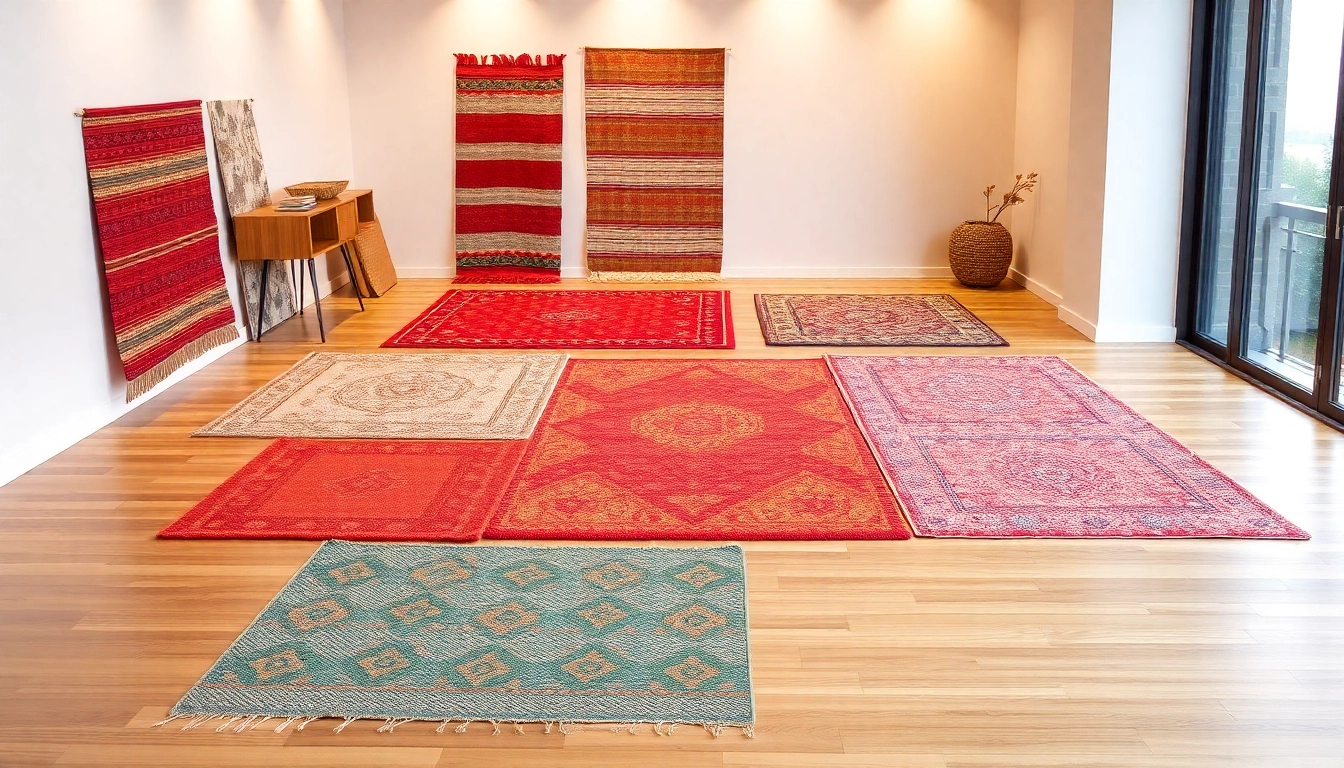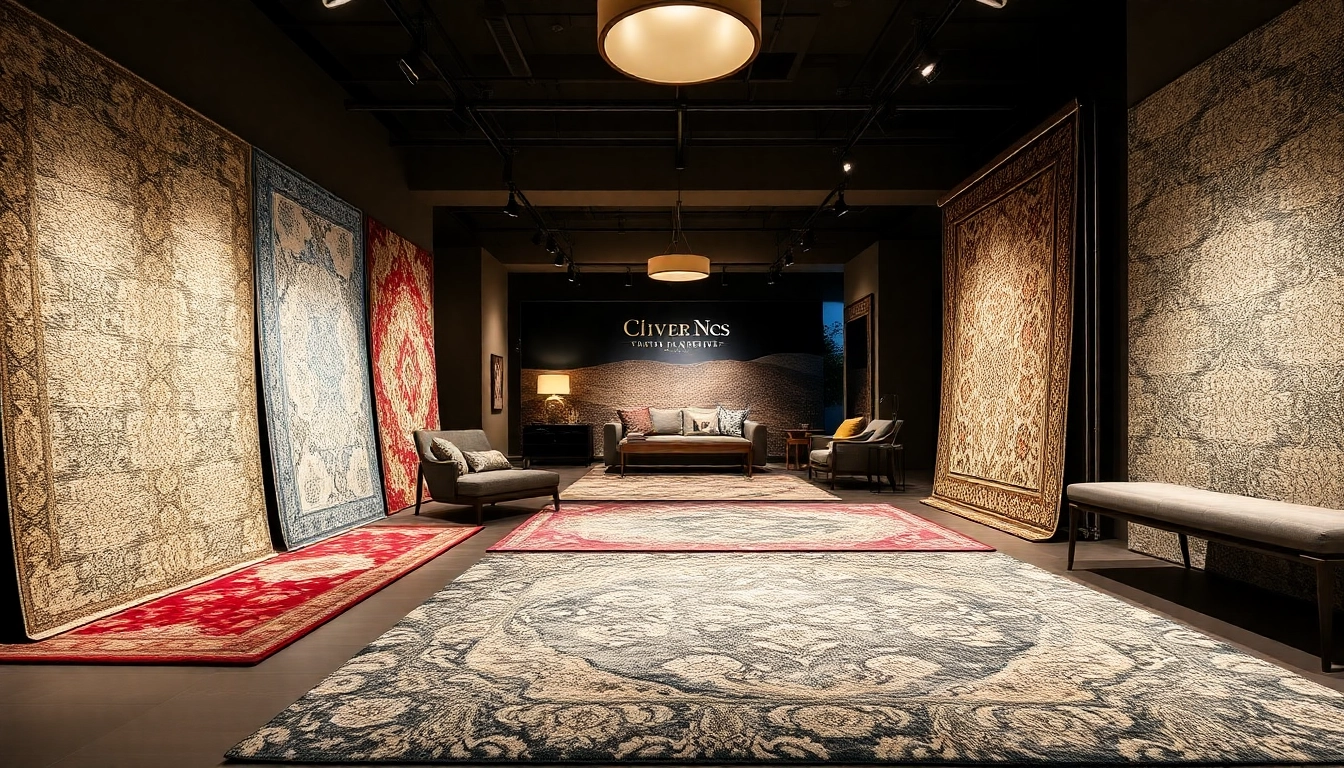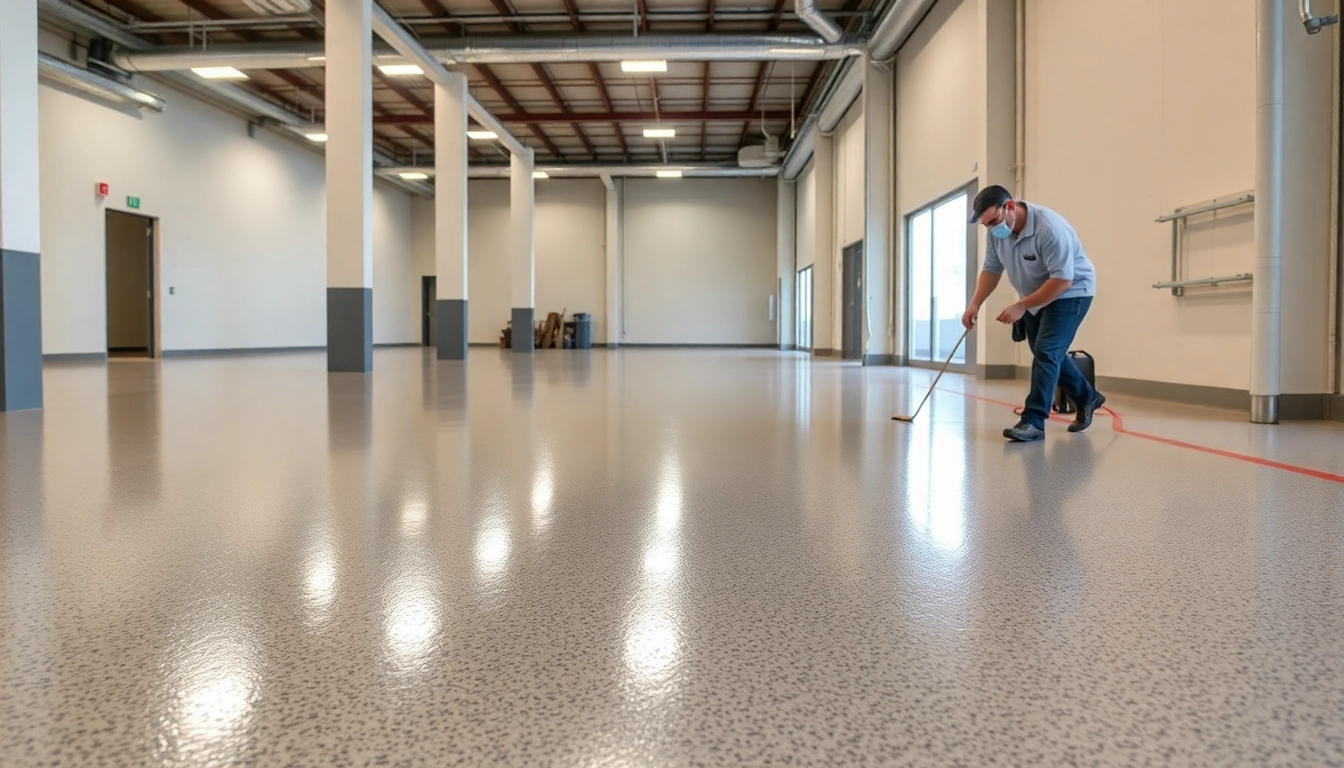
Introduction to Tappeti a Milano: Tradition Meets Contemporary Style
Milano, renowned for its fashion, design, and vibrant arts scene, is also a city that boasts a rich tradition in craftsmanship, particularly in the art of rug making. The city’s Tappeti a Milano scene seamlessly blends age-old techniques with modern aesthetics, creating a dynamic market that appeals to both connoisseurs and contemporary home decorators. From centuries-old Persian and Oriental rugs to sleek, geometric modern pieces, Milano offers an unmatched diversity in rugs that elevates any interior. Understanding this landscape requires a look into the heritage of Milano’s artisans, current design trends, and why investing in quality rugs can mark a significant enhancement to one’s environment.
History and Craftsmanship of Milano’s Rug Artisans
Milano’s reputation in the world of rugs traces back to a tradition rooted in international trade and craftsmanship excellence. Historically, the city’s strategic position in Northern Italy facilitated the import and export of luxurious textiles and rugs, establishing Milano as a hub of high-quality craftsmanship. Renowned ateliers and workshops in districts like Brera and Navigli have preserved ancient techniques, such as hand-knotting and weaving that date back centuries. Artisans here are known for their meticulous attention to detail, sourcing premium raw materials like pure wool, silk, and natural dyes derived from local and exotic plants.
Many of these artisans belong to families that have passed down skills through generations, maintaining authenticity and superior quality. For instance, the intricate craftsmanship seen in Persian, Tabriz, and Nain rugs reflects a deep historical influence, yet Milano artisans often incorporate contemporary motifs, enhancing their appeal for modern interiors. This fusion of tradition and innovation has positioned Milano as a leader in producing rugs that are both culturally rich and uniquely suited to modern lifestyles.
Current Trends in Tappeti a Milano Interior Design
Modern interior design in Milano embraces diversity, favoring eclectic mixes of old and new. The latest trends include the use of large Persian or Oriental rugs to define open-plan living spaces, adding warmth and character to minimalist environments. Geometric and abstract patterns in contemporary Tappeti a Milano are gaining traction, paired with sleek furniture and neutral palettes to create sophisticated, balanced interiors.
In addition, vintage and handcrafted kilim rugs are increasingly popular, reflecting interest in sustainability and eco-friendly decor. These rugs not only offer aesthetic versatility but also tell a story—each knot and color pattern conveying a unique history. Milano’s home decorators now often blend traditional Persian motifs with modern elements, creating layered, textured spaces that communicate both elegance and cultural depth.
Another notable trend is the integration of vibrant colors with neutral palettes, allowing rugs to serve as statement pieces. Technology also influences decoration choices, with virtual room visualization tools helping clients envisage how different Tappeti a Milano fit within their spaces even before purchase. Such trends are reshaping Milano’s interior design landscape, emphasizing personalized, meaningful choices in rug selection.
Why Choosing Quality Tappeti a Milano Enhances Your Environment
Investing in high-quality Tappeti a Milano provides tangible benefits beyond aesthetics. First, a well-crafted rug anchors a room, offering a sense of warmth and comfort. The superior materials used—such as hand-spun wool or silk—not only enhance durability but also improve acoustics by absorbing sound, making living or working spaces more serene.
Moreover, quality rugs have a timeless appeal, retaining their beauty and value over decades. They can also serve as heirlooms, passed down through generations. From a practical standpoint, authentic Milano rugs with proper density and craftsmanship are easier to maintain; they resist wear and fading better than synthetic or mass-produced alternatives. Additionally, a carefully selected rug reflects personal style and elevates the overall decor, making any environment feel more curated and refined.
In a city like Milano, where aesthetics are integral to identity, choosing authentic, high-quality Tappeti a Milano signifies sophistication and a connection to a rich cultural tradition. This investment is not just about decoration, but about embracing a piece of history and artisanal excellence that infuses your space with character and elegance.
Types of Tappeti Available in Milano for Every Taste
Traditional Persian and Oriental Rugs
Traditional Persian and Oriental rugs are the backbone of Milano’s rug scene. Known for their intricate patterns, rich color palettes, and meticulous craftsmanship, these rugs represent centuries of cultural artistry. Popular styles include the classic Tabriz, Nain, and Kashan, each distinguished by specific knotting techniques, motifs, and regional dyes. They are ideal for adding a touch of classic luxury and historical richness to both traditional and contemporary settings.
Modern and Geometric Tappeti a Milano
The modern segment includes rugs with bold geometric shapes, abstract designs, and minimalist color schemes. These rugs often utilize new materials or innovative weaving techniques, catering to modern and contemporary interiors. They serve as focal points and conversation starters, blending seamlessly with sleek furniture and open spaces.
Vintage, Kilims, and Handcrafted Designs
Vintage rugs and kilims are appreciated for their unique charm and eco-conscious appeal. Kilims are flat-woven, with vibrant, tribal motifs often passed down through generations. These pieces add texture and cultural depth, making them perfect for eclectic, bohemian, or rustic interiors. Handcrafted rugs, whether they’re recent or antique, carry an aura of authenticity that mass-produced alternatives cannot replicate.
How to Select the Perfect Tappeti a Milano for Your Space
Size, Style, and Color Coordination Tips
Choosing the right size is fundamental; measure your space accurately, considering furniture placement to ensure the rug complements rather than overwhelms. For large living rooms, oversized rugs that anchor seating areas are ideal, while smaller rugs work well in entryways or under dining tables.
Color coordination involves balancing the dominant hues in your room. Neutral tones allow for flexible decorating schemes, while vibrant or patterned rugs can serve as statement pieces. When in doubt, aim for a rug that either matches the room’s color palette or provides a pleasing contrast to enhance visual interest.
Material Choices: Wool, Silk, Cotton, and Blends
Material affects both the aesthetic and functional qualities of a rug. Wool is durable, insulating, and easy to maintain, making it suitable for high-traffic areas. Silk offers a luxurious sheen and intricate detailing but requires careful maintenance. Cotton is lightweight and affordable, ideal for casual settings. Blends combine properties, offering durability with softness and affordability.
Factors Influencing Durability and Maintenance
Durability depends on knot density, material quality, and construction technique. For high-traffic areas, prioritize densely knotted, tightly woven rugs. Regular maintenance includes vacuuming, rotating the rug to prevent uneven wear, and prompt stain removal. Professional cleaning and restoration services in Milano help preserve the rug’s beauty over decades, safeguarding your investment.
Best Practices for Purchasing Tappeti a Milano
Trusted Showrooms, Online Shops, and Trade Fairs in Milano
Milano offers a spectrum of purchasing options, from high-end showrooms like Artorient Milano to online marketplaces and specialized trade fairs. Visiting physical stores provides tactile experience and allows artisans to demonstrate the rug’s craftsmanship. Trade fairs and expos offer curated selections, enabling buyers to compare styles and prices directly.
Understanding Pricing, Authenticity, and Quality Assurance
Authentic, handmade Milano rugs command higher prices, reflecting the craftsmanship and materials involved. Always verify the rug’s origin, knot count, and sourcing. Reputable vendors provide certificates of authenticity and detailed provenance. Be cautious of overly low prices, which may indicate synthetic or machine-made imitations.
Negotiation Tips and After-sales Services
Negotiation is common, especially for high-value pieces. Know the market value and ask about warranties, delivery, and maintenance packages. Reputable sellers often include after-sales services such as cleaning, restoration, and advice on care, ensuring your rug remains pristine for years to come.
Maintaining and Restoring Your Tappeti a Milano
Cleaning Techniques for Different Materials
Routine cleaning involves gentle vacuuming and spot cleaning for minor stains. Wool rugs benefit from periodic professional cleaning, which removes embedded dirt without damaging fibers. Silk rugs require delicate handling, often needing specialized cleaning. Cotton rugs can be washed with mild soap and water, ensuring they dry thoroughly. Always consult specialists experienced in handling luxury and antique rugs.
Professional Restoration and Repair Options in Milano
Milano’s expert restorers can mend tears, re-knot worn areas, and restore color vibrancy. Restoration work preserves the integrity and beauty of antique or heavily used rugs, often increasing their value. Techniques include hand-repair and re-dyeing, tailored to match the original craftsmanship.
Long-term Preservation Tips to Protect Your Investment
Protect your rug from direct sunlight, which can fade colors. Use rug pads to prevent slipping and reduce wear. Regularly rotate rugs to ensure even aging. Store rugs properly if not in use, ideally rolled with acid-free materials and kept in climate-controlled environments. Periodic professional inspections can preempt potential issues, extending the lifespan of your investment.







